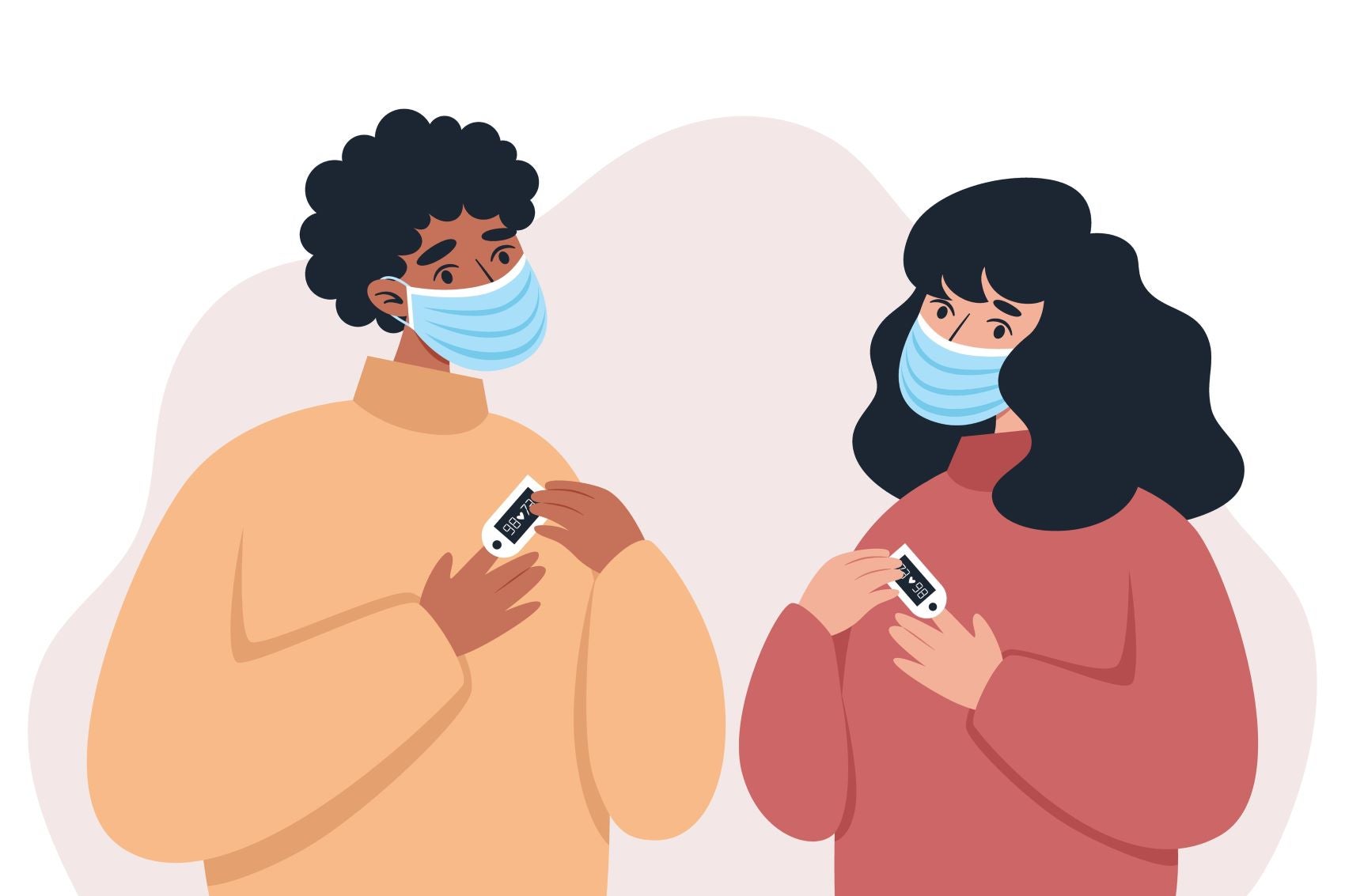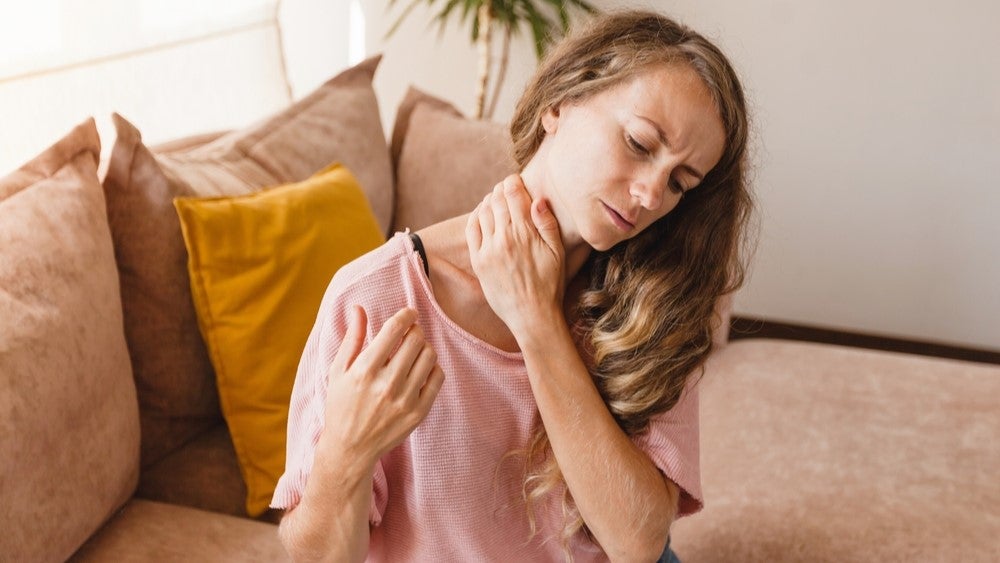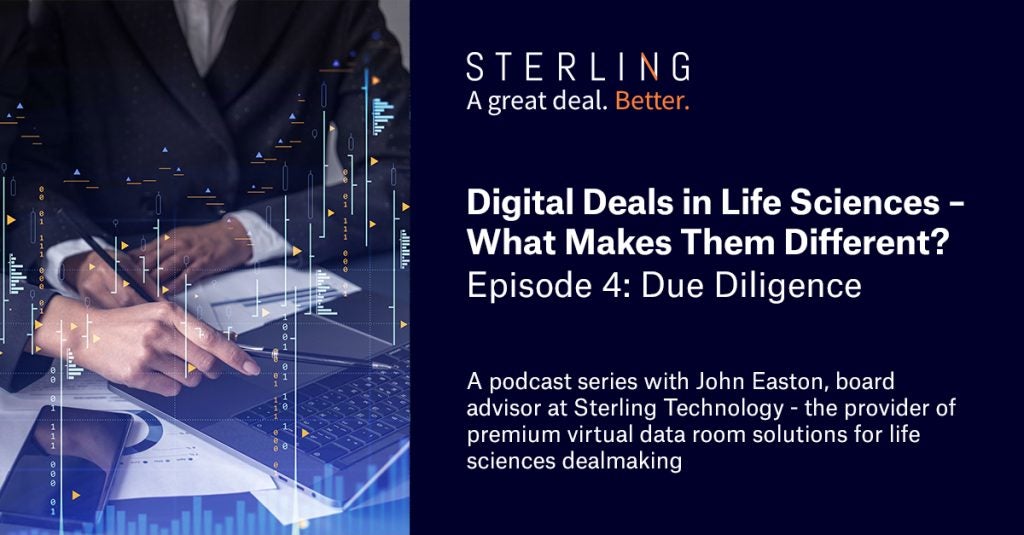
Last November, health secretary and UK MP Sajid Javid announced a review into systematic racism and gender bias in medical devices in a bid to ‘close the chasms that the pandemic has exposed’. The review is expected to be published within the next 12 months.
Alongside his American counterpart, Xavier Becerra, Javid is working on introducing new international standards to ensure that medical devices have been tested on all races before they are allowed to reach the market.
Research shows devices such as finger pulse oximeters work less effectively for patients with darker skin and could have contributed to thousands of unnecessary deaths during the height of the pandemic.
Javid’s announcement came following a University of Michigan paper showing that, in people with dark pigment, the oxygen saturation might be overestimated by pulse oximeters, which could result in someone not getting oxygen or a ventilator when they should have.
Just last month a study found that racial and ethnic biases in pulse oximetry accuracy were associated with greater occult hypoxemia in Asian, Black, and non-Black Hispanic patients with Covid-19, “which was associated with significantly delayed or unrecognised eligibility for Covid-19 therapies among Black and Hispanic patients.” This disparity may have contributed to worse outcomes among these groups.
Oximeters are used in many different important medical situations outside of Covid-19, including checking the blood oxygen levels of expectant mothers.
How well do you really know your competitors?
Access the most comprehensive Company Profiles on the market, powered by GlobalData. Save hours of research. Gain competitive edge.

Thank you!
Your download email will arrive shortly
Not ready to buy yet? Download a free sample
We are confident about the unique quality of our Company Profiles. However, we want you to make the most beneficial decision for your business, so we offer a free sample that you can download by submitting the below form
By GlobalDataThe inability of some devices to do their job on darker skin tones is not news and, as Javid pointed out in his announcement, “there are research papers already on this and no one did anything about it.”
Professor at Yale School of Medicine and world-renowned sleep expert Dr Meir Kryger has been one of the people writing about this issue for quite some time.
Kryger, who diagnosed and reported the first case of obstructive sleep apnea in North America, tells Medical Device Network that back in the early 1970s, when he first started studying sleep, there was no accurate way to continuously measure blood oxygen, problems with which can cause many sleep disorders.
A long-lost gold standard

“Companies started to make oximeters that were more what I would call black boxes.”
The first device to come out for this use was made by Hewlett Packard (now known for being a computer company) in close collaboration with NASA to check the health of astronauts, as an accurate measure of oxygen is essential in space.
Hewlett Packard’s clunky device became Kryger’s “gold standard” oximeter. “To this day, I wish they still produced it because it was such a great instrument,” he says.
Knowing that the device would need to be accurate for use in all skin tones, Packard’s oximeter used fibre optic light transmission through the ear with eight options for light wavelength (most oximeters currently only have two) to ensure the brightness settings would work for everyone.
“They actually tested the device and validated it in people with different skin colours so it gave a sense of confidence that this was accurate,” says Kryger. “You also had the capability of calibrating the device yourself with the blood of the person that you were about to test. It was brilliant engineering.”
Using spectrophotometry to scan blood helped determine precisely how much light was being absorbed by an individual’s skin and tissues. This allowed for personalised light-level calibrations.
Kryger praises the firm for its transparency at the time. Discussion around how Packard went about ensuring the absence of racial bias is still available today.
Some 248 Black volunteers were included to set the device’s baseline calibrations, which could be seen as revolutionary by today’s regulatory standards – the FDA only currently requires data from four Black subjects to be included per sample group of 12.
“Four people are supposed to represent the world of darkly pigmented people?” says Kryger. “That’s a problem. The FDA needs to update their requirements so that companies actually disclose the data in much more detail and make it publicly available.”
By the 1980s, Hewlett Packard had gone out of the business of oximetry and moved into the budding industry of computers.
“Companies started to make oximeters that were more what I would call black boxes,” says Kryger. “In other words, despite trying to get the validation data from them, I couldn’t get it – so I was never that confident in them.”
A lot of the newer devices to come out were (and often are to this day) finger pulse oximeters that still used light transmission, but as the pigment on the back of the hand can affect the absorption of light transmission many are less accurate for darker people.
Despite this, finger pulse oximeters made their way into the consumer market.
Covid-19 as a catalyst
“When Covid-19 hit, people all over the world were buying oximeters by the gazillions and expected these things to work,” says Kryger. Finger pulse oximeters are available to buy in a number of major retailers including Boots, Amazon and Walmart.
“I was not convinced, even before the University of Michigan article came out,” he adds.
This meant that very early on in the pandemic, many doctors, including Kryger, didn’t have a good enough method for remotely monitoring patients at home.
Oximeters may not be exclusively diagnostic devices, says Kryger, but very often do direct a patient’s care pathway.
If someone goes to the hospital complaining of shortness of breath the hospital should perform a test to measure blood oxygen. This will be done either via a blood draw (the most accurate way of measuring oxygen) or via an oximeter, typically a finger oximeter.
“The data that comes out is actionable information. In other words, if that number is low, you’re going to need to do something about it – the patient may need a ventilator.”
Similarly, patients suffering from Covid-19 at home could misjudge their need for medical intervention or oxygen by using a device that doesn’t work for them.
Covid-19 bought numerous fragments of racial bias in healthcare to the fore. The disproportionate effect of Covid-19 on Black and indigenous communities was exacerbated by the lack of devices that had been validated for these communities.
“The Black population was affected in a very severe way compared to the white population,” says Kryger. “The death rate was higher, more people got sick – that didn’t hit the media enough, in my opinion.”
How did we go backwards?
In a Wired op-ed, cultural anthropologist and associate professor of anthropology at MIT Amy Moran-Thomas observes that Hewlett Packard’s admirable transparency around equitable design in the 1970s “took place against the backdrop of the hard-fought gains of the Civil Rights movement, when issues of racial equity were being more publicly discussed across sectors.”
The black box years that followed in the 1980s, Moran-Thomas points out, coincided with the rise of neoliberalism and privatisation. The many studies and reports around the failings of pulse oximetry accuracy in darker skin tones petered out as doctors got used to being blocked by proprietary data.
As for the companies making devices that don’t work on darker skin tones, Kryger says these oversights are a case of unintentional or unconscious bias.
As Javid said in his announcement last year, “I’m not saying this was deliberate by anyone, I think it’s just a systemic issue, potentially, with medical devices and it may go even further than that with medical textbooks, for example.”
Indeed textbooks across all disciplines have been criticised for their lack of diverse representation. It was just last year that medical student Chidiebere Ibe went viral for his medical illustrations of Black bodies.
Kryger says this is a huge step for representation, also noting that his wife had recently picked up Band-Aids for dark skin by accident, a mistake that would have been difficult to make up until a few years ago as Band-Aids for different skin colours are only recently becoming more available.
“Whenever you see a test or a questionnaire you have to consider that there may be biases built into the analysis of information.”
Personalised medicine: but personalised for who?
Another issue with a lot of the things we measure for today, says Kryger, is that most of the markers for baseline normal were done on white male bodies many years ago. Meanwhile, there are examples of medical racism that are still influencing decisions today, such as the eGFR test based on a hypothesis that dates back to the test’s creation, when medical experts thought Black people have higher muscle mass leading to higher kidney function.
“Whenever you see a test or a questionnaire you have to consider that there may be biases built into the analysis of information. I think this is a topic that is eventually going to become even bigger because we are entering an era of personalised medicine.”
Covid-19 has spurred on a self-testing revolution which has seen a huge boost in self-monitoring and management with digital health technologies, devices and wearables.
But as CEO of NHS Confederation Matthew Taylor pointed out in a recent Medical Device Network article: “The pandemic has also shone a harsh spotlight on health inequalities and without concerted action, those who are already empowered will be the ones who grasp the new opportunities that testing and new med-tech offer.”
“People should be familiar with what instruments they are using and how accurate they are in the patient sitting in front of them.”
Finding a better solution
During the pandemic, Kryger says that seeing as a lot of his patients are Black and knowing that a lot of the oximeters out there were not good enough for this group, he set out to investigate more reliable options.
“I had a huge unmet need,” he says. “I had patients that were having trouble with their treatments for sleep breathing disorders, and I didn’t have any way to monitor their blood oxygen levels during times of the pandemic.
Kryger came across BodiMetrics’ Circul+ ring which claimed to have been developed accounting for darker skin tones.
“I’m a fairly sceptical guy,” admits Kryger. “I’m not an engineer but I know about electronics.”
The ring, which measures blood oxygen, heart rate and body temperature, had been developed by an engineering group in China. When Kryger requested their validation and calibration data, they obliged.
Like the old Hewlett Packard device, the ring has been calibrated against blood and has been tested in people with dark skin. Unlike many other finger oximeters, the Circul+ ring’s sensors are on the palm of the hand, where the difference in pigment between races is marginal.
“That was the only data I had that I could trust at that point when monitoring a patient at home, because nobody was measuring anything early on in the pandemic until all the labs reopened,” Kryger says.
To accurately measure sleep, tracking needs to be continuous throughout the night. “It was incredibly useful for me at a time when I couldn’t get any other information,” he adds. “Finger oximeters only provide a spot measurement and the Apple Watch measures oxygen saturation every 10-15 minutes, so it’s not continuous.”
“I don’t endorse any products really,” says Kryger, who has become the scientific advisor for BodiMetrics. “What I do endorse is that people should be familiar with what instruments they are using and how accurate they are in the patient sitting in front of them.”
Who is the onus on?
Many device companies making pulse oximeters, including BodiMetrics, were able to bring their device to market via the FDA’s General Wellness Policy for Low-Risk Devices. Under this regulation, as long as a device provides information and not a diagnosis, its makers can bring it to the marketplace.
But, as highlighted by Covid-19, some of these devices are used as part of a life-or-death decision-making process and often at the recommendation of government and healthcare providers.
Recognising that the African American and other minority communities were being disproportionately affected by Covid-19, the New York City Department of Health facilitated the distribution of pulse oximeters to hospitals and outpatient providers that predominantly serve these communities.
Towards the end of the department’s guidance for distribution, the document notes that research has shown these devices can produce unreliable results in patients with darker pigmented skin and cites the University of Michigan paper.
Meanwhile, in the UK, the ZOE Covid study, the largest ongoing study of Covid-19 in the world, recommends monitoring blood oxygen levels with an oximeter linking to a Which article that, again towards the end, mentions the issue of bias.
These well-meaning initiatives show that the onus is essentially on the consumer to find reliable and effective solutions from the sea of black box devices that are available on the market.
While a spattering of articles around the issue has sporadically come out every so often over the past 40 years, these devices are still available with the extent of their inefficiencies still largely unknown to the general public.
The resolution of this issue can’t come quickly enough as we enter an era of the unknown with long Covid, which will require accurate remote patient monitoring. What should stand as hopeful is that we had equity in oximetry before, as Kryger’s old gold standard showed, something that can surely be achieved again today in the age of precision and personalised medicine.






